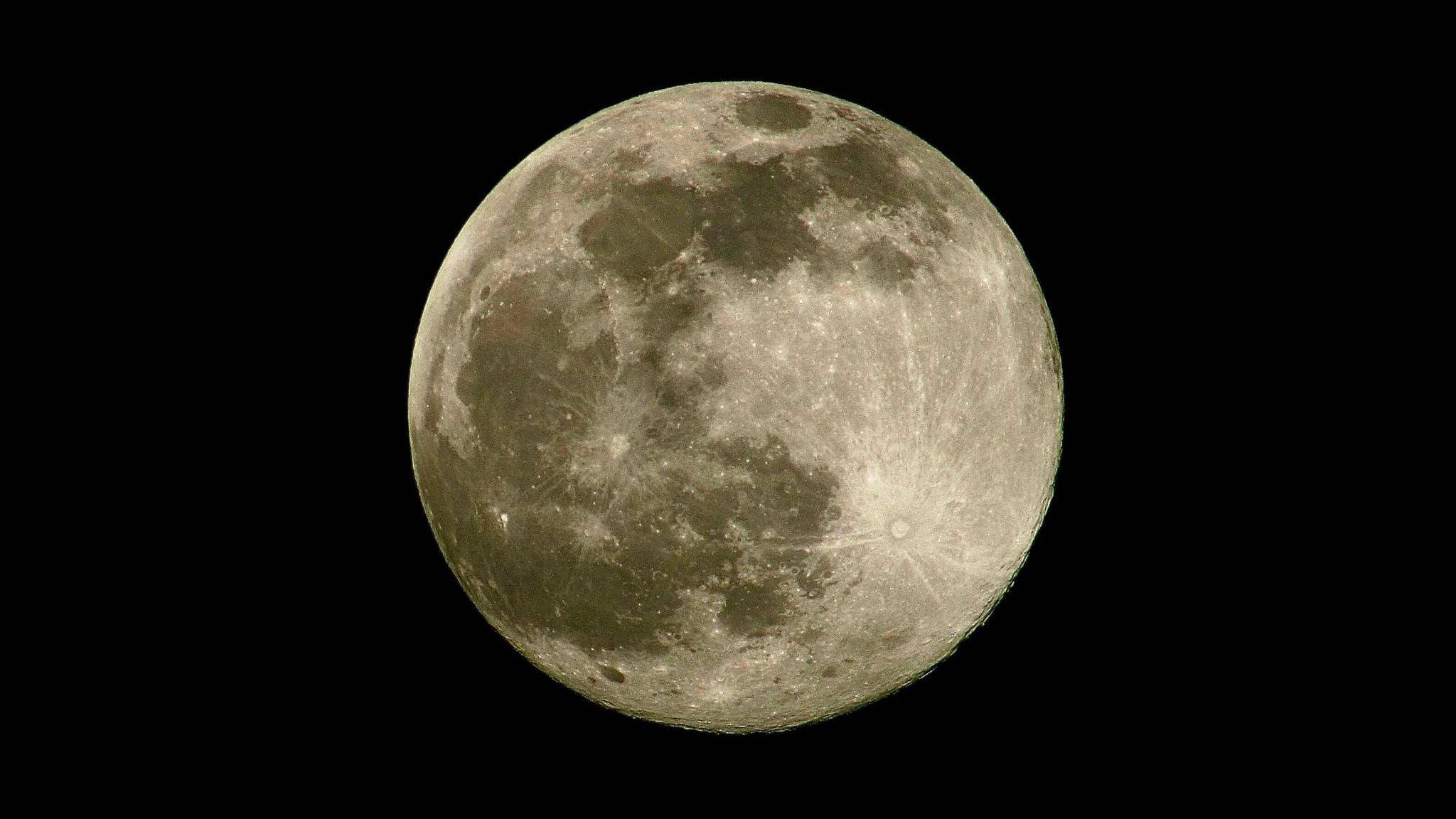In pictures: Clear skies offer great view of Worm Moon
- Published

John England captured the full Moon over Beeston, Nottinghamshire, at about 21:00 GMT on Thursday
Photographers across the East Midlands have been capturing March's full Moon - known as the Worm Moon.
The name relates to earthworms beginning to emerge as the soil starts to warm up in spring.
It is also known as the "Crust Moon", the "Crow Comes Back Moon" and the "Sore Eyes Moon".
91╚╚▒Č Weather Watcher Janis Phillips captured the Worm Moon in Exton, Rutland
The Worm Moon was beautifully illuminated in clear skies on Thursday evening and into the early hours of Friday.
John England, captured it over Beeston, Nottinghamshire, once the mist settled on a "very cold evening".
"The Moon was so bright," he said. "It was just absolutely stunning to see.
"You could see the details of the craters, especially near the crust.
"But I was gutted not to see the ring around the Moon earlier in the evening."
The 52-year-old, who used a mobile phone but also has a telescope, said he had been fascinated by the sky after being inspired as a child by astronomer Sir Patrick Moore.
Mr England said he had been taking pictures of the Moon since his early 20s, adding it was his "favourite celestial".
March's full Moon was also snapped in Elton, Derbyshire, by 91╚╚▒Č Weather Watcher Jojen
Another 91╚╚▒Č Weather Watcher LindafromBelper enjoyed snapping the Moon from her home in Derbyshire
Tracey1978tails - also a 91╚╚▒Č Weather Watcher - saw the Worm Moon beautifully illuminated over Overseal, Derbyshire
Here is how the Moon looked from Chellaston in Derby
According to the National Space Centre in Leicester, full Moons happen roughly every 29.5 days, when the Moon is located on the opposite side of the Earth to the Sun and so appears fully illuminated.
The next full Moon will be the "Pink Moon" on 16 April.
Follow 91╚╚▒Č East Midlands on , on , or on . Send your story ideas to eastmidsnews@bbc.co.uk, external.
- Published17 March 2022
- Published21 March 2019
- Published13 March 2017
- Published20 September 2021
- Published18 January 2022
- Published18 January 2022
- Published17 February 2022
- Published17 November 2021